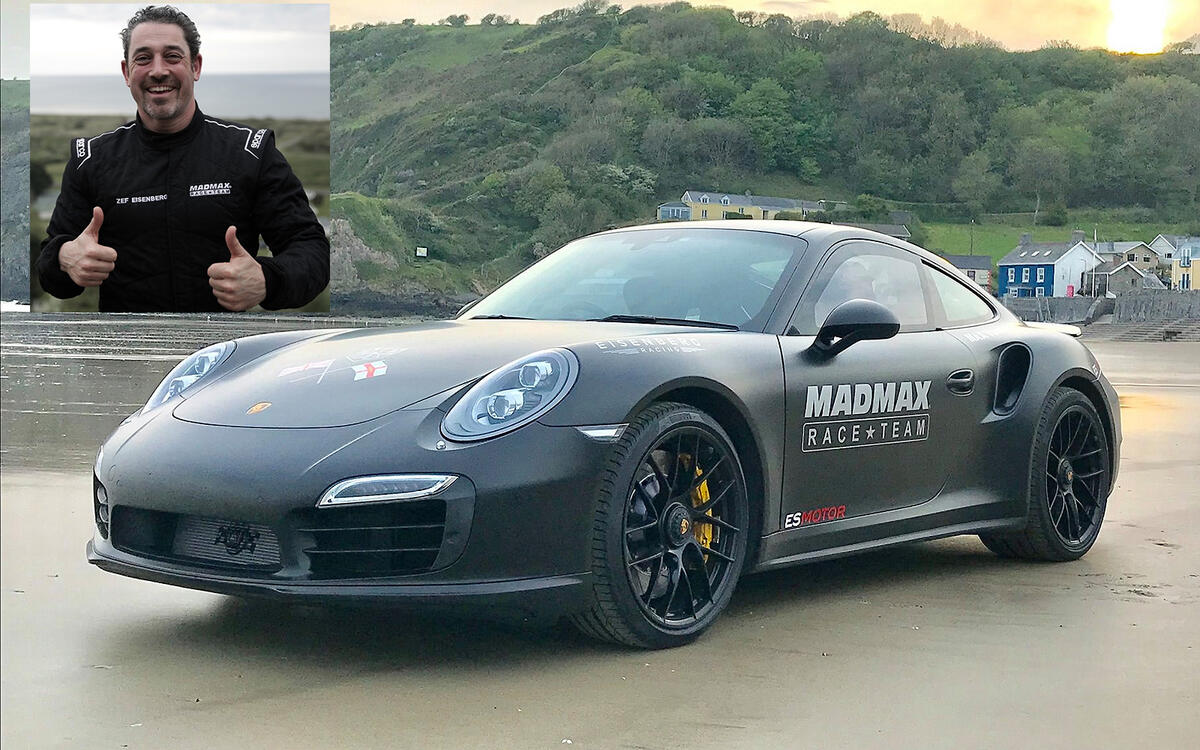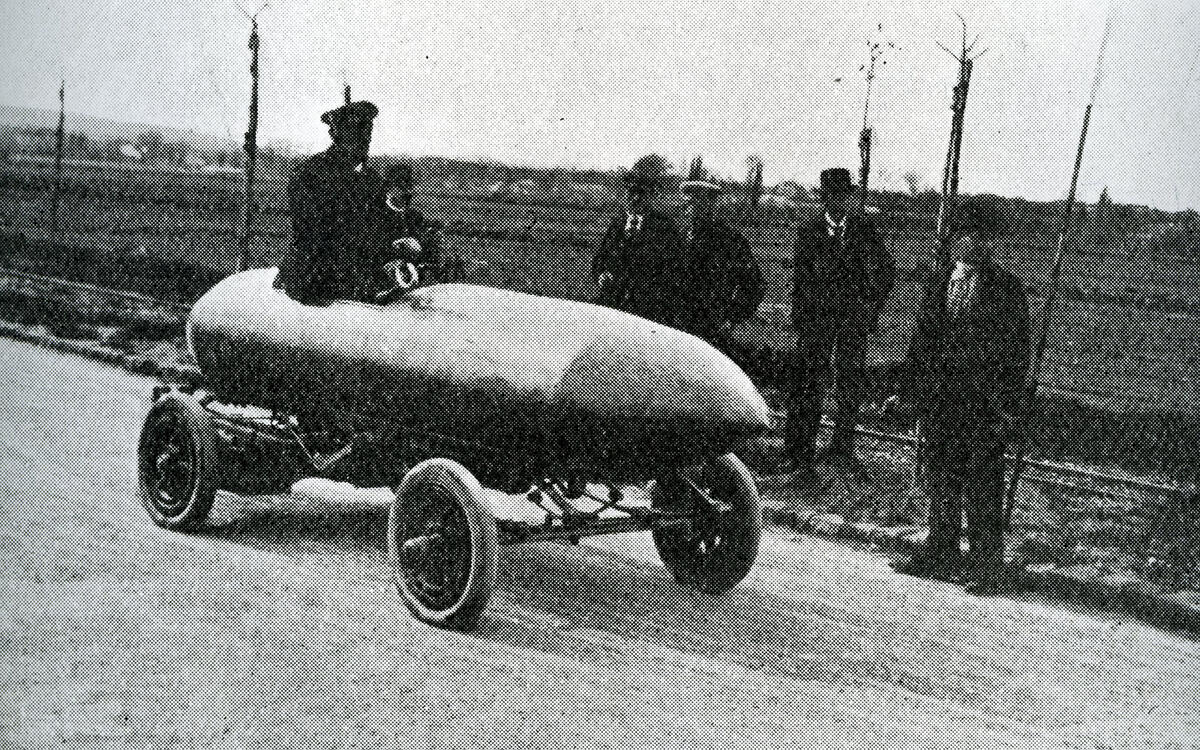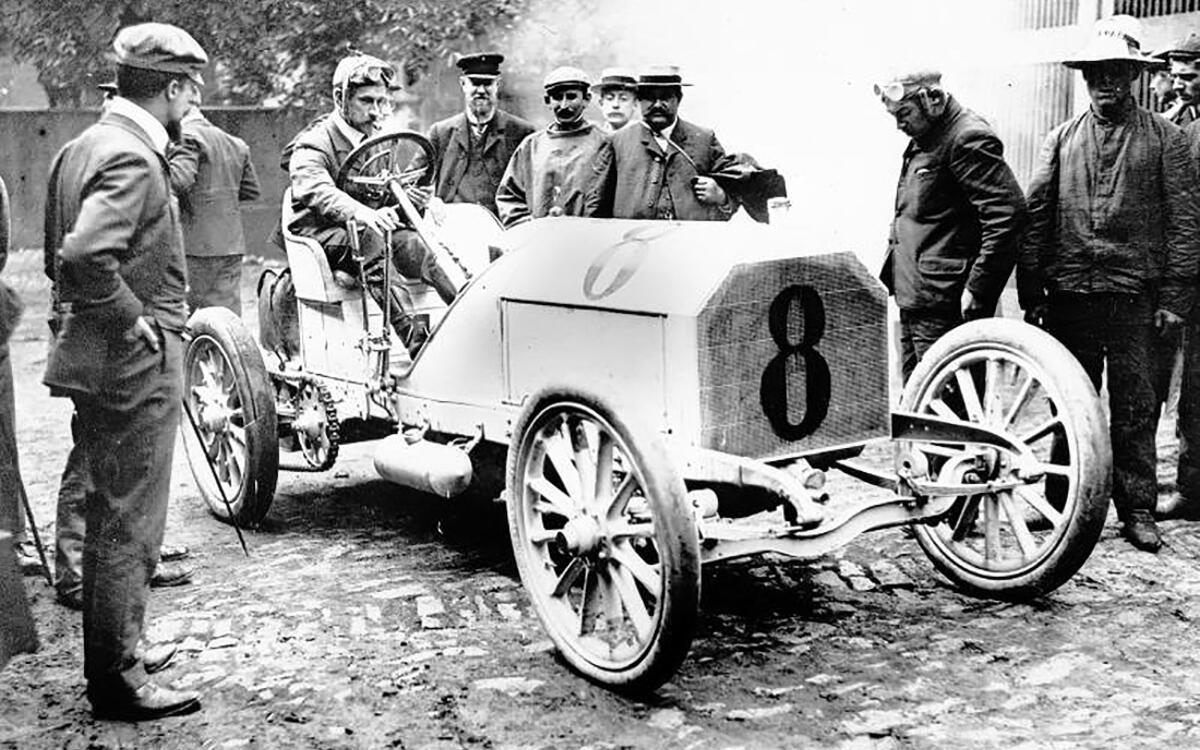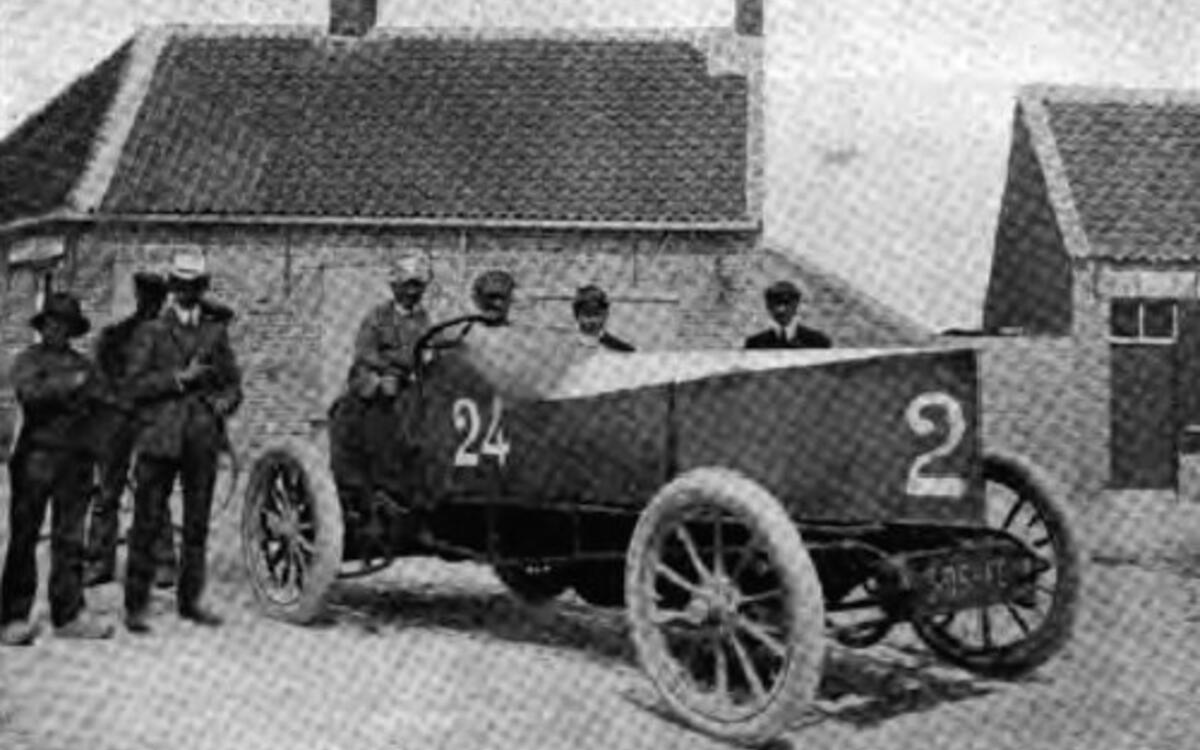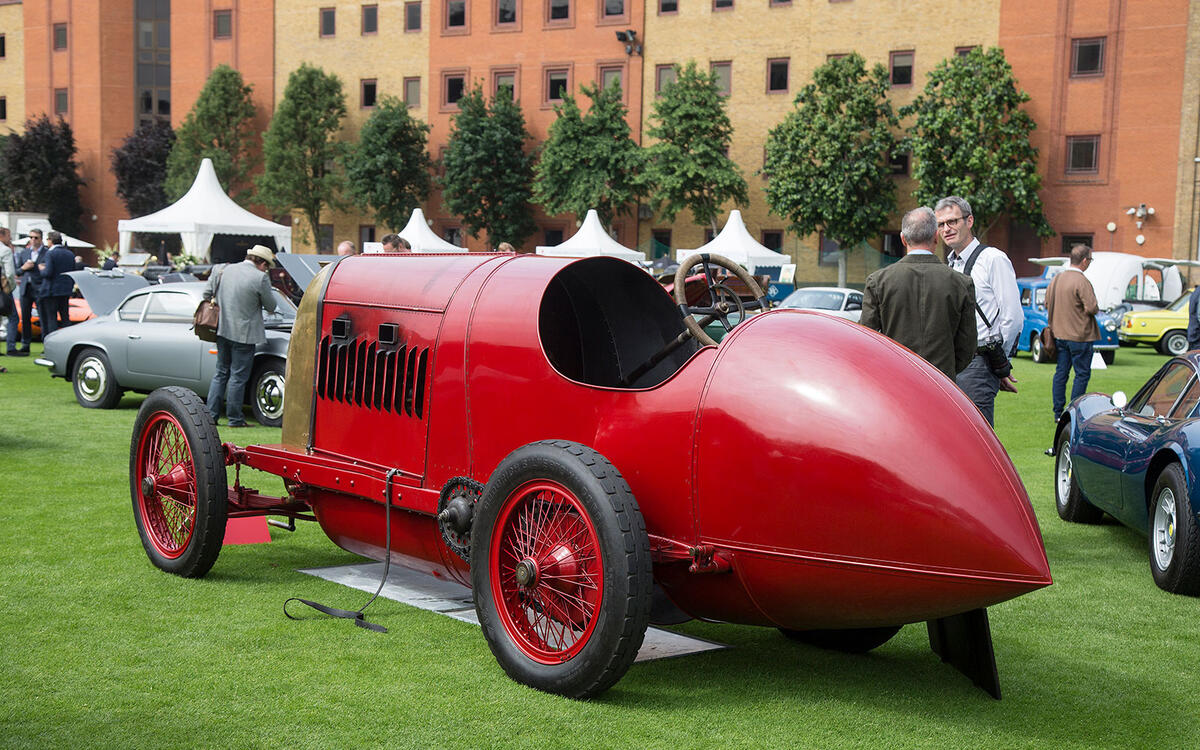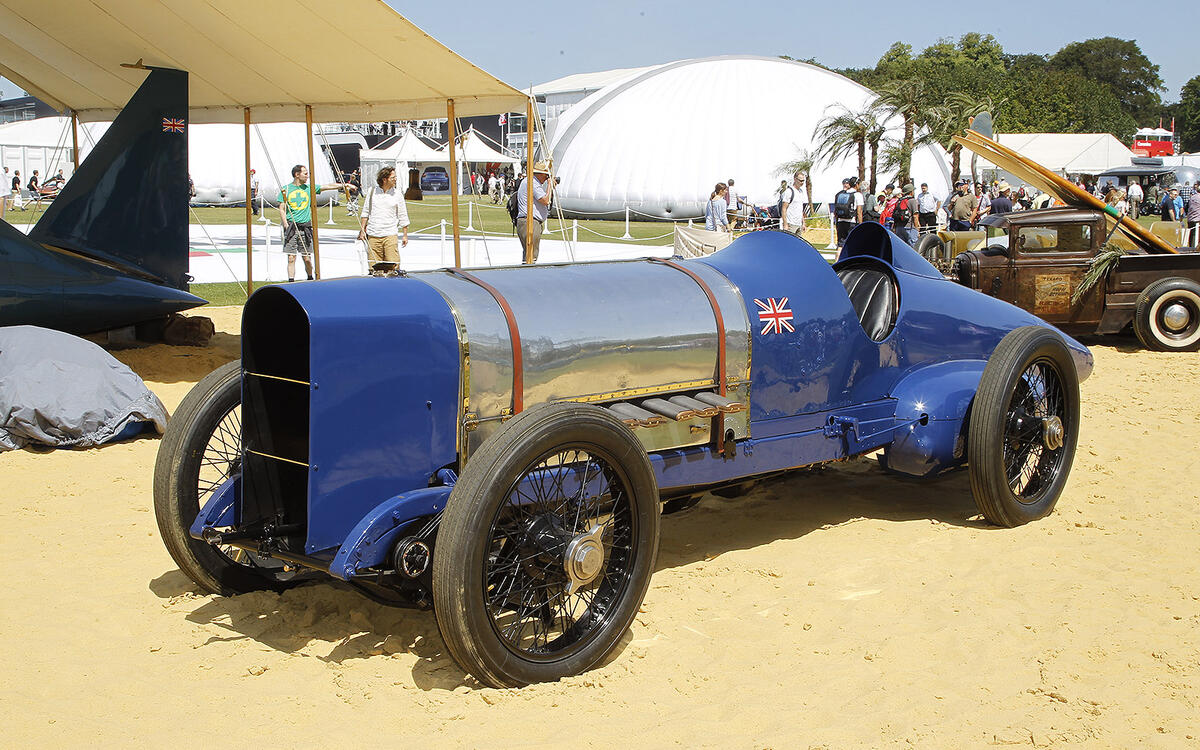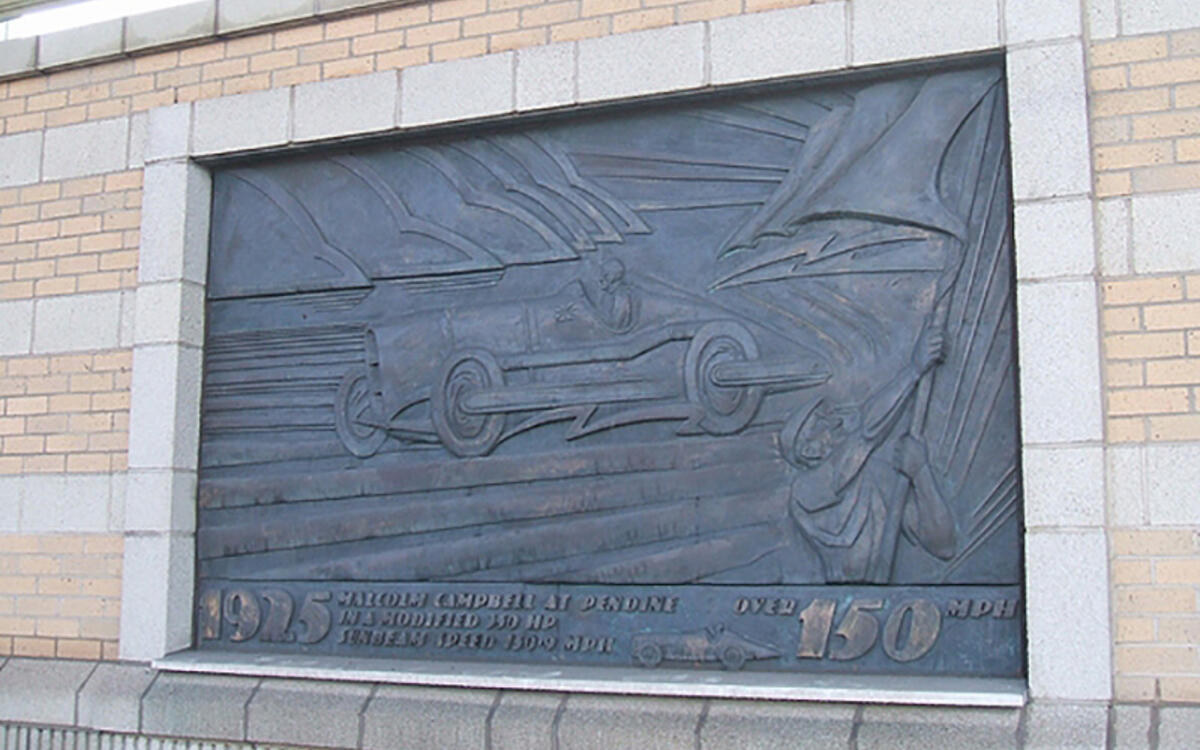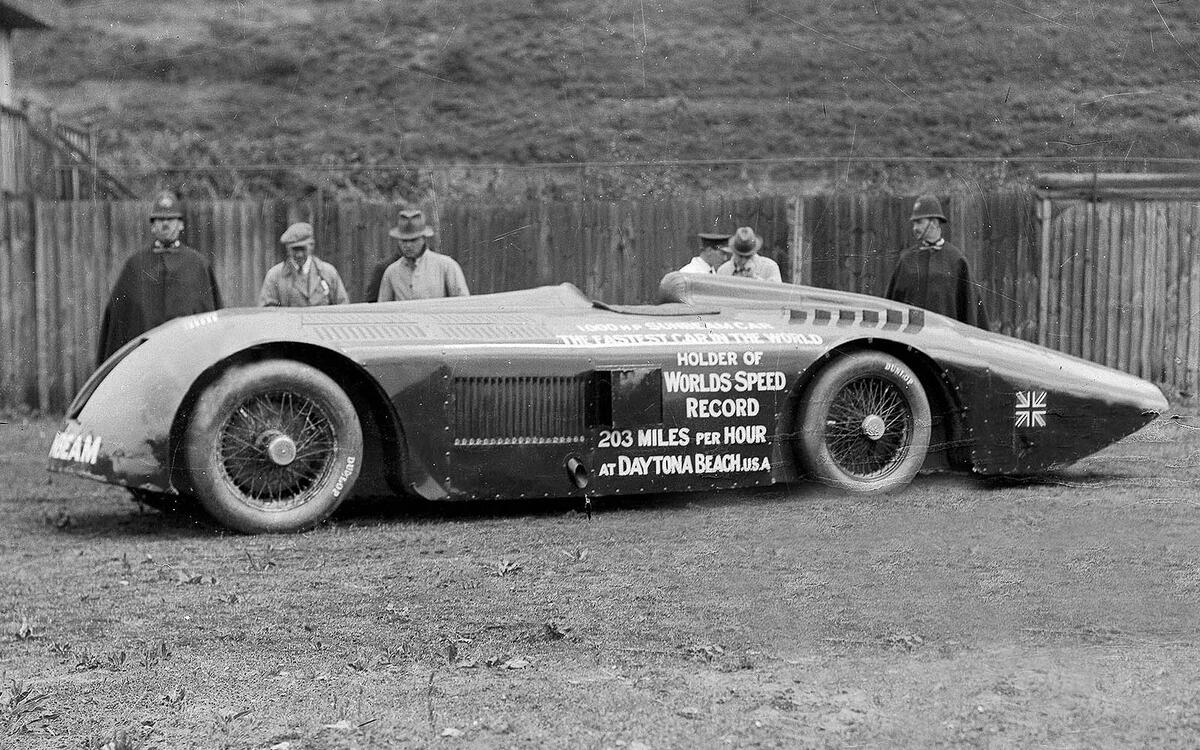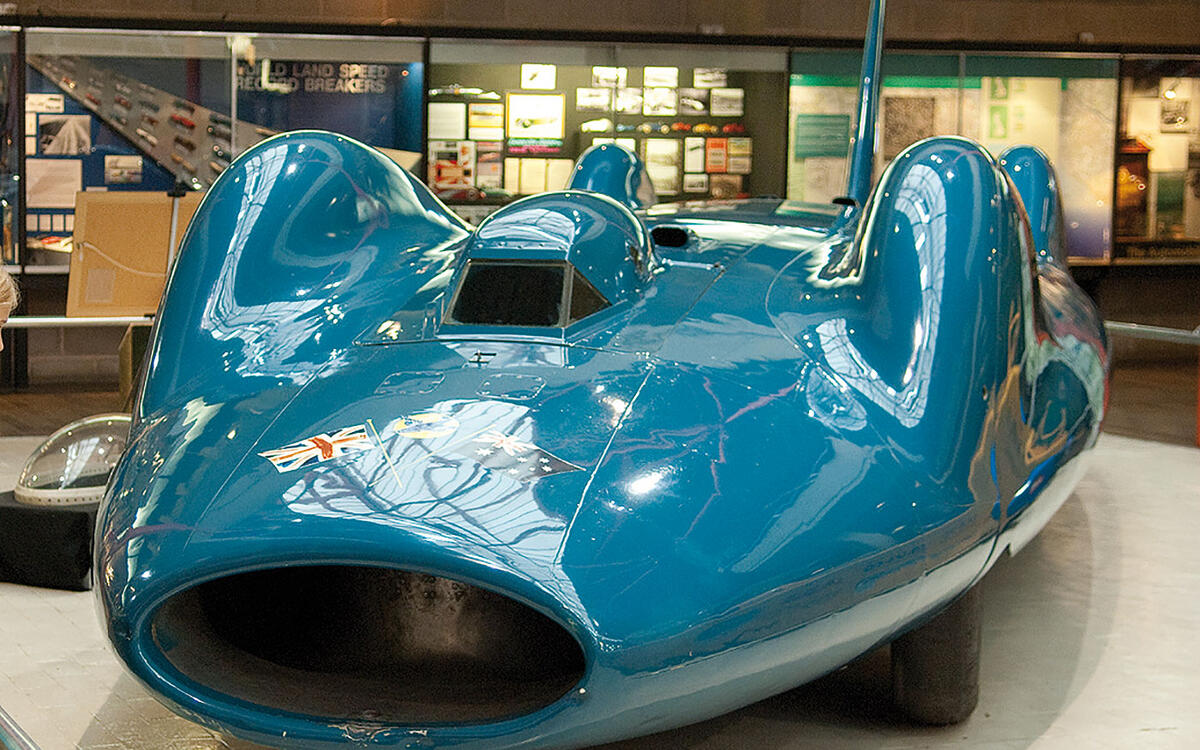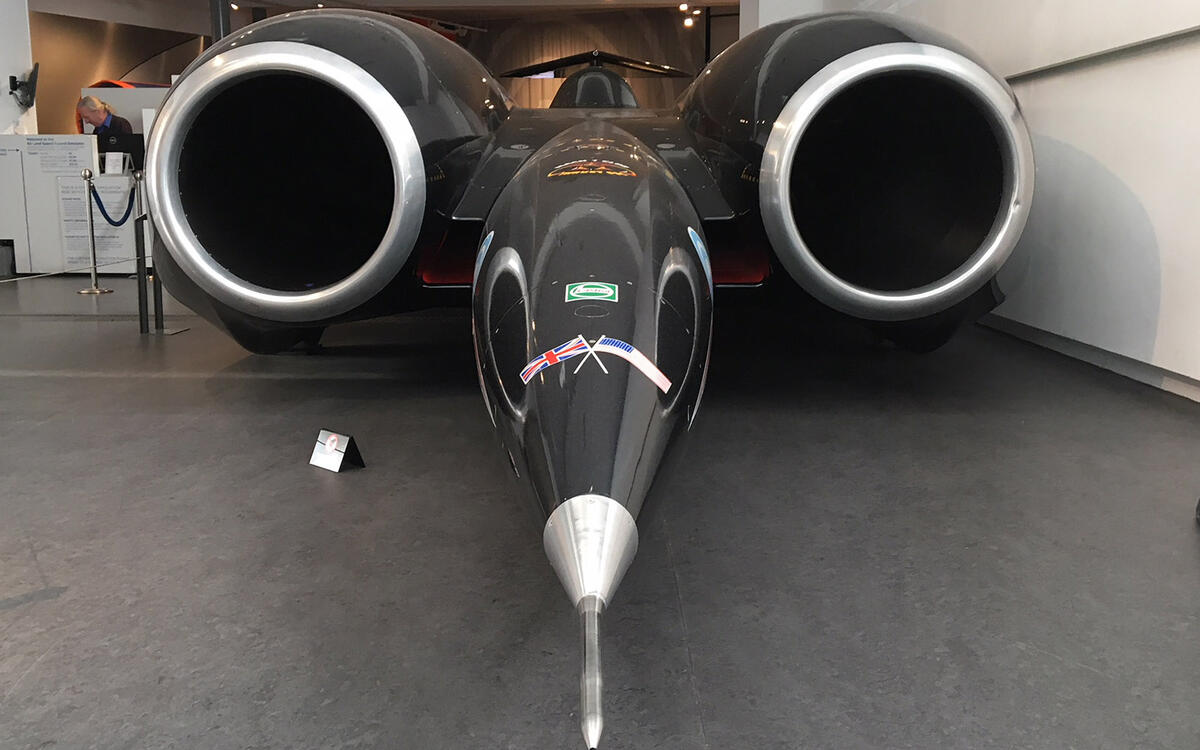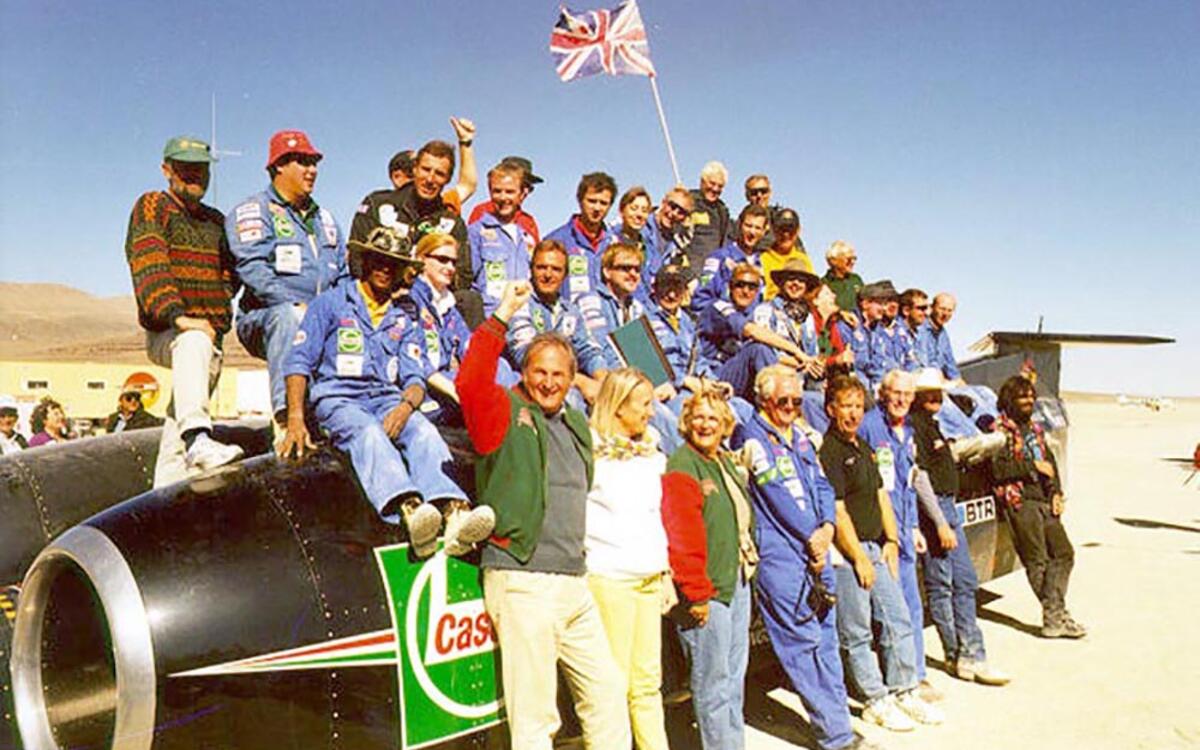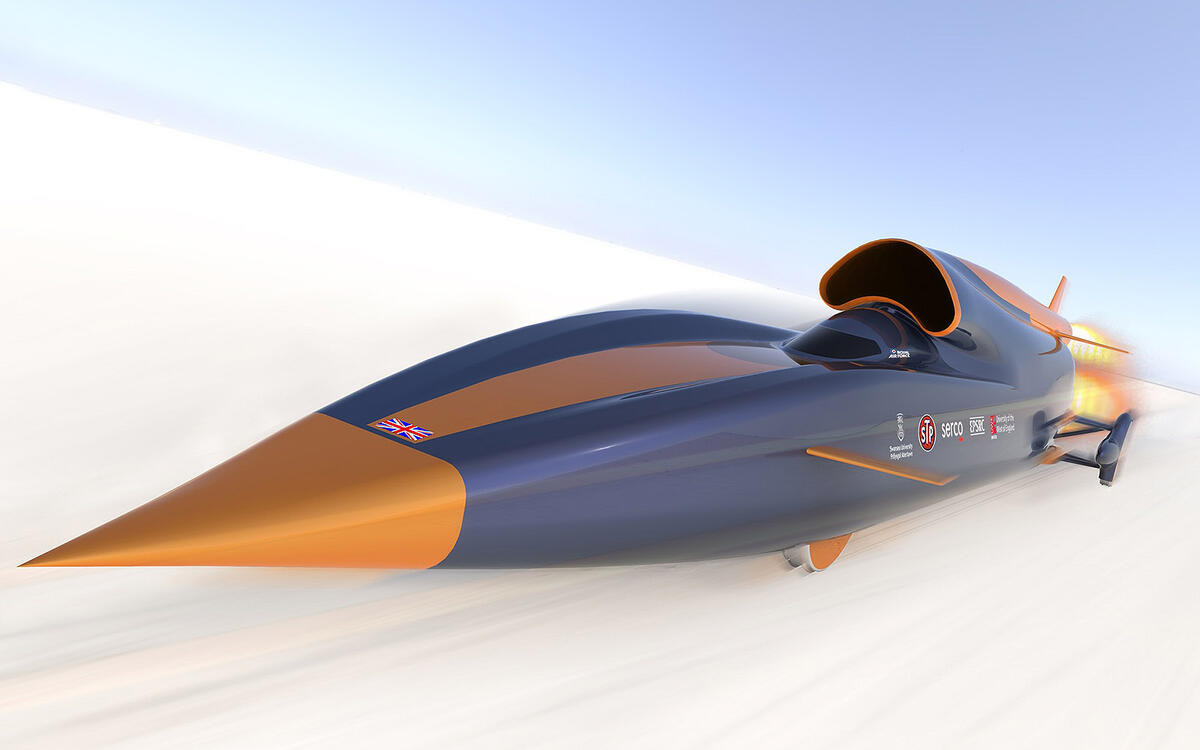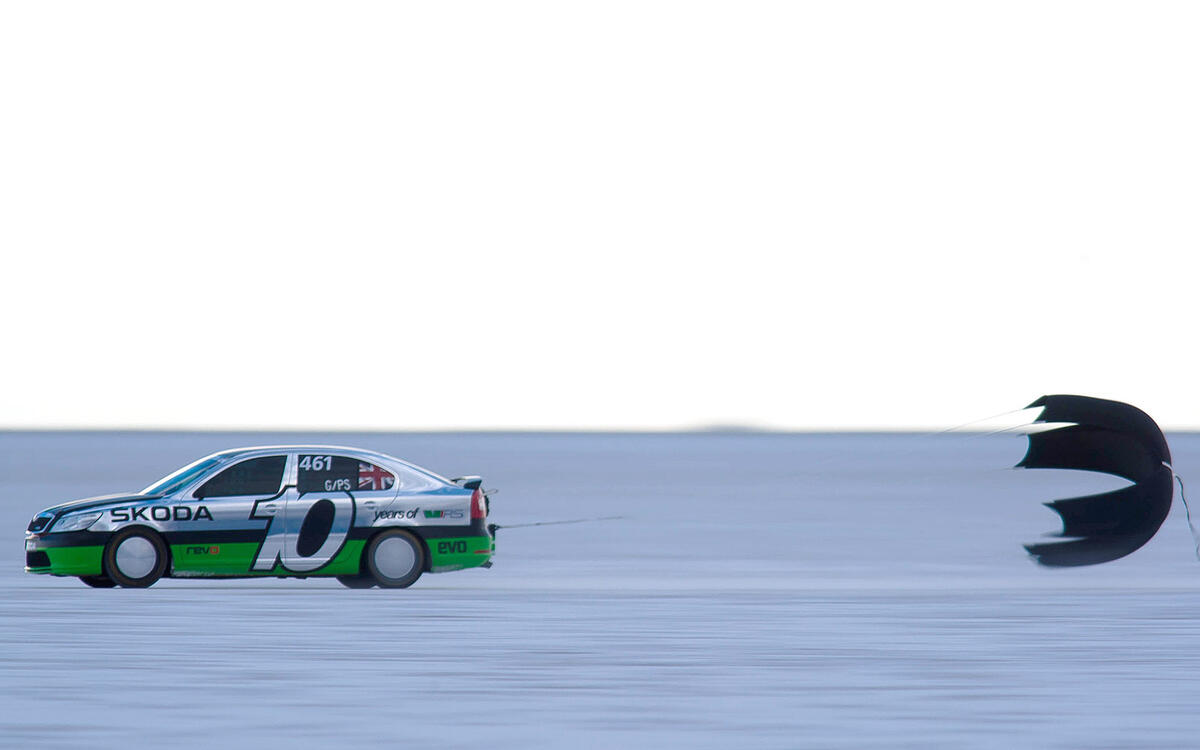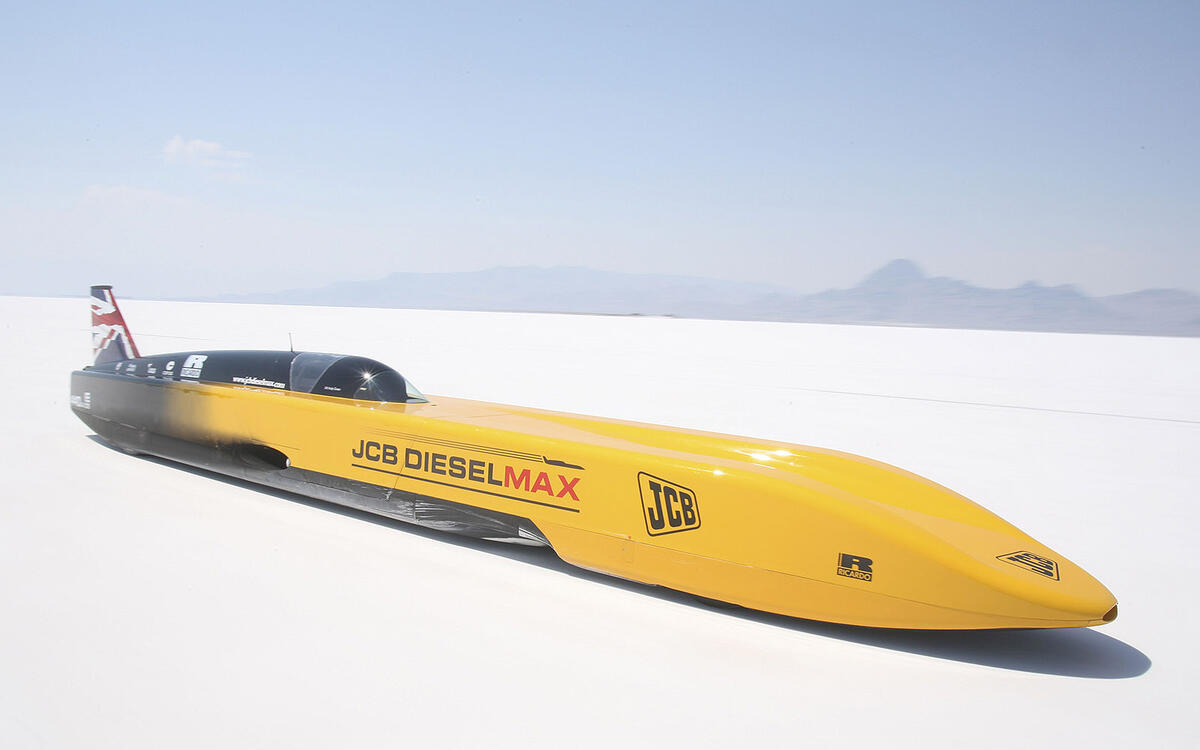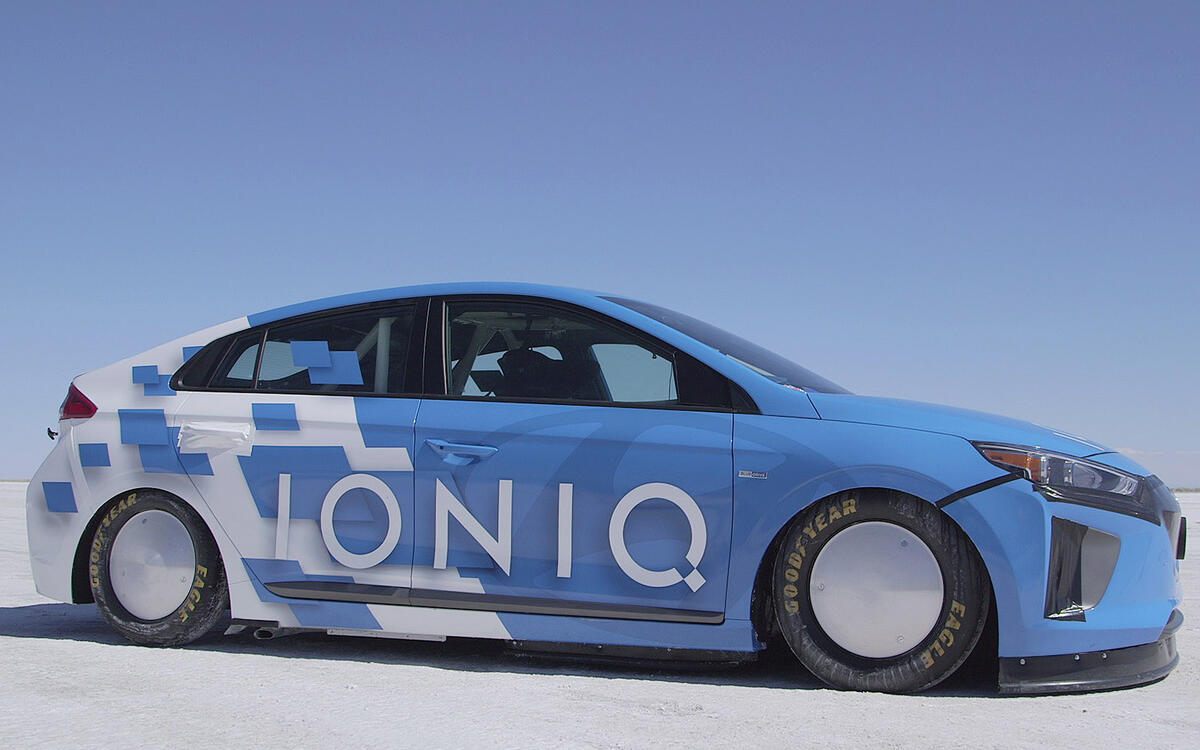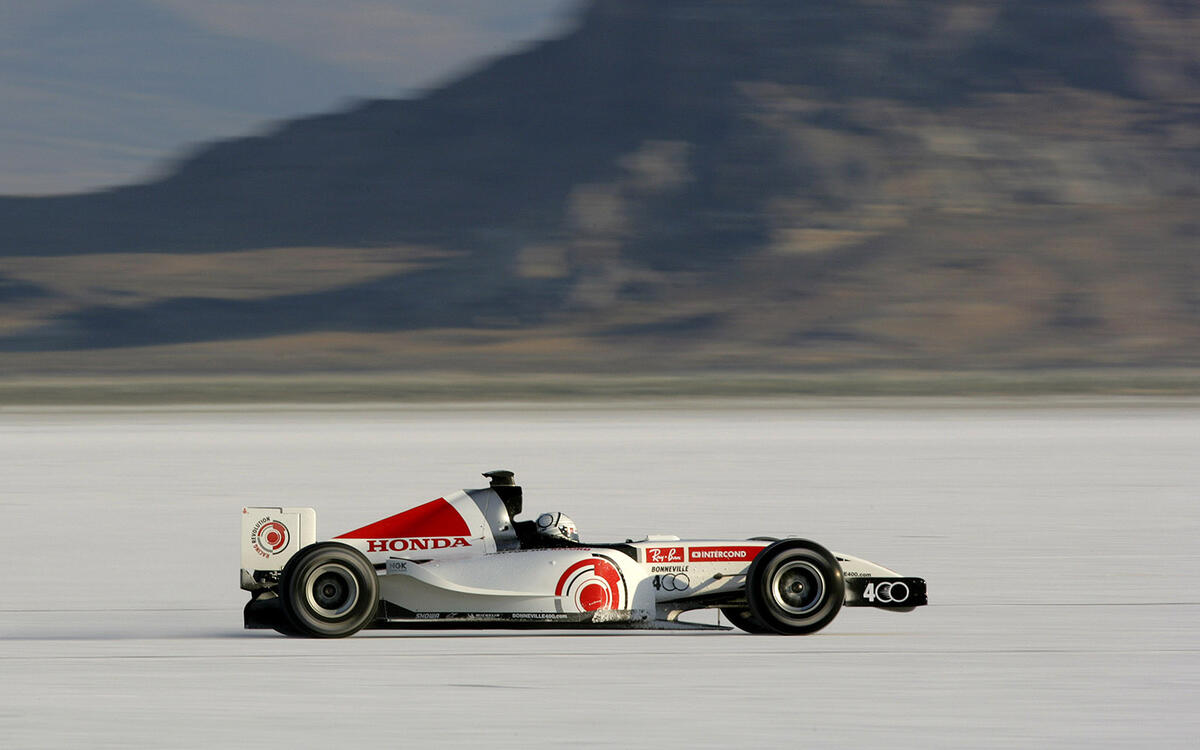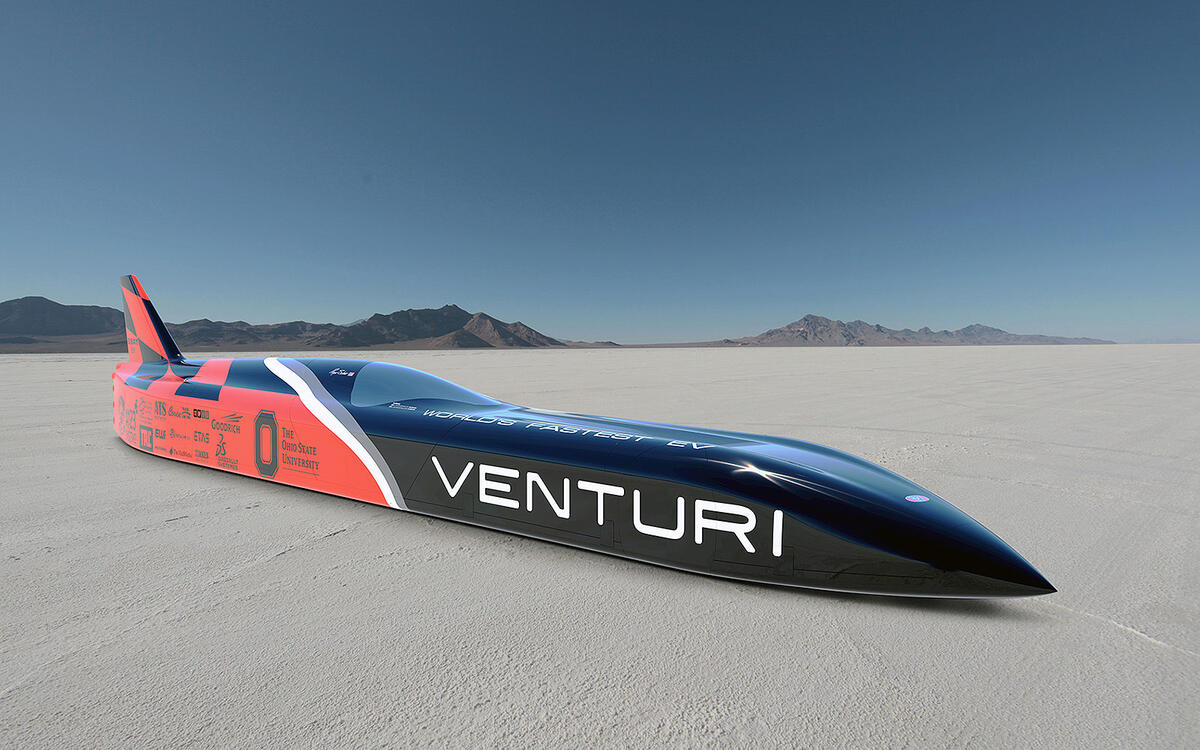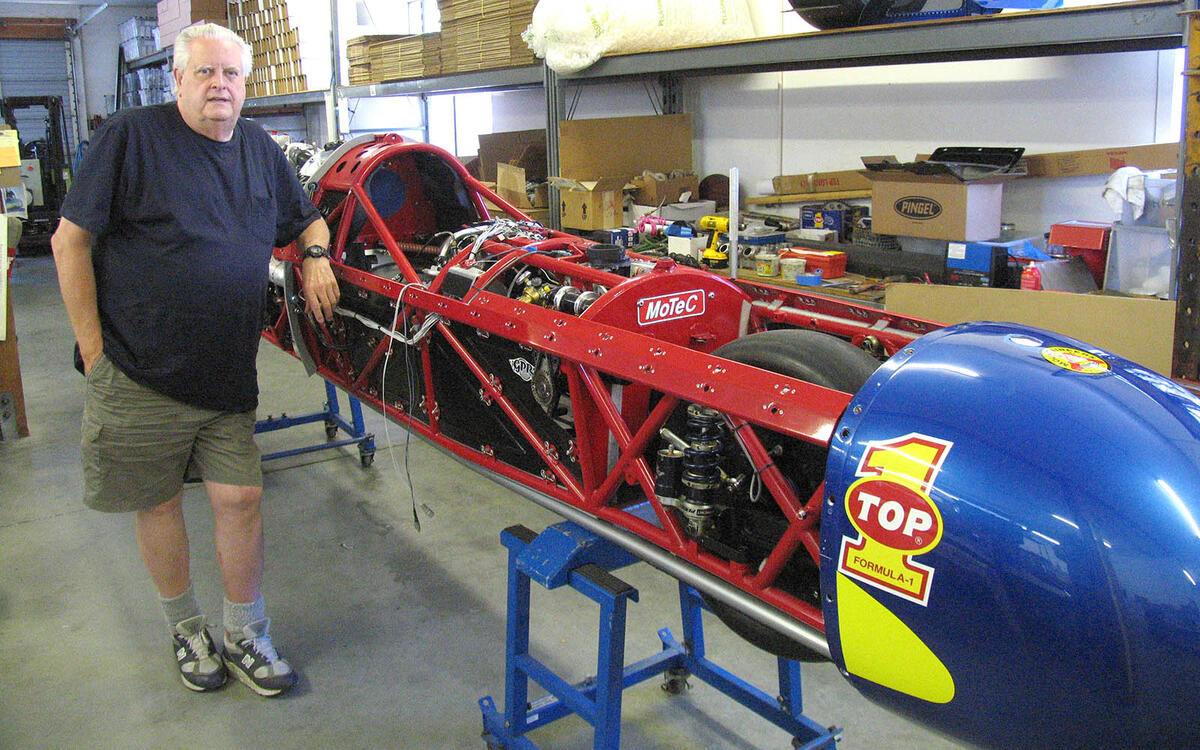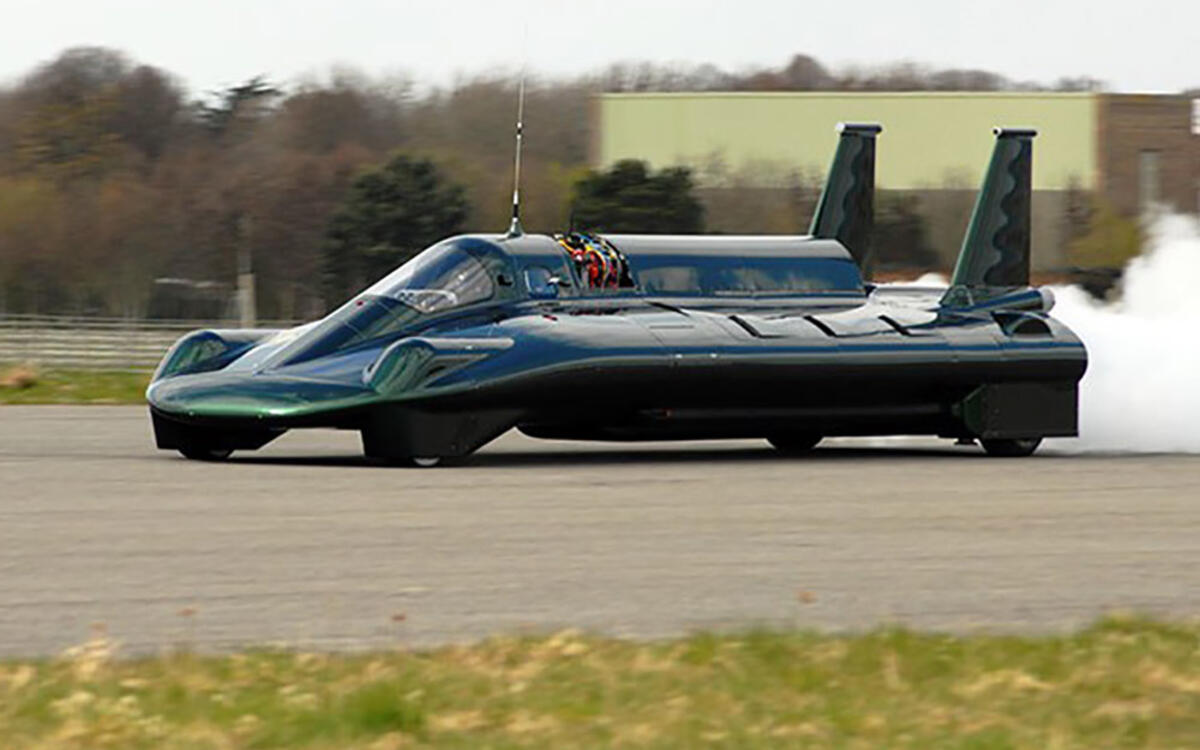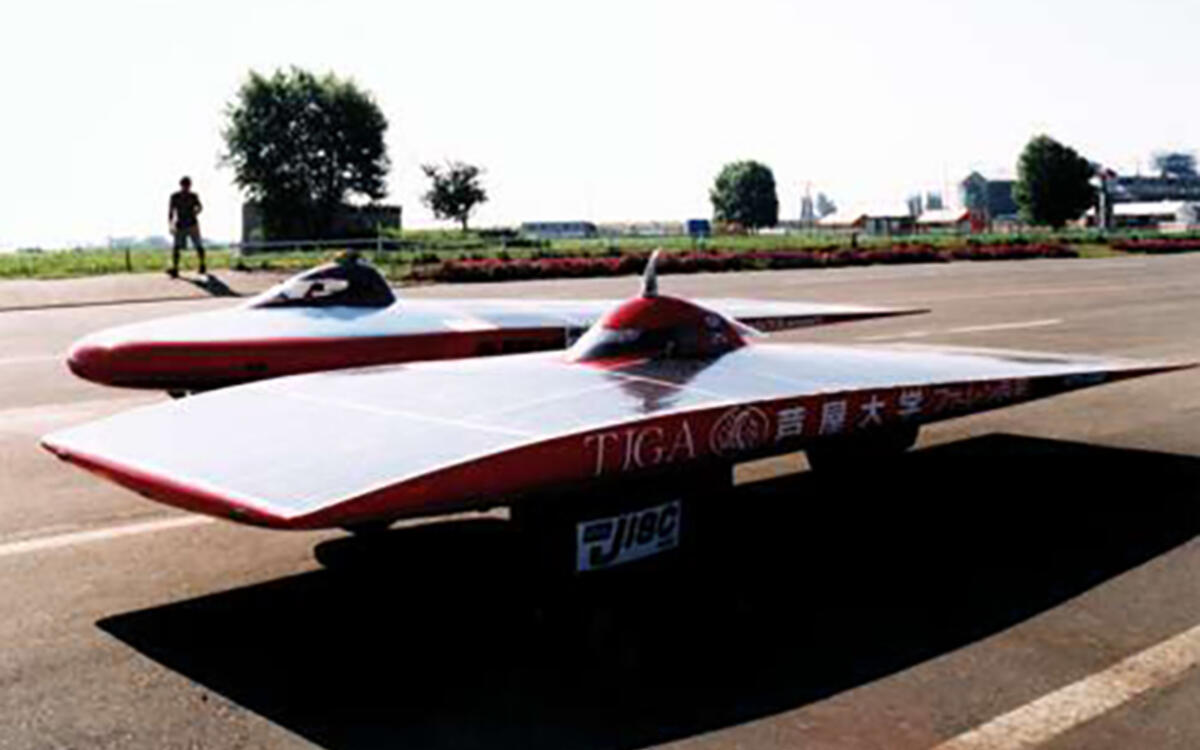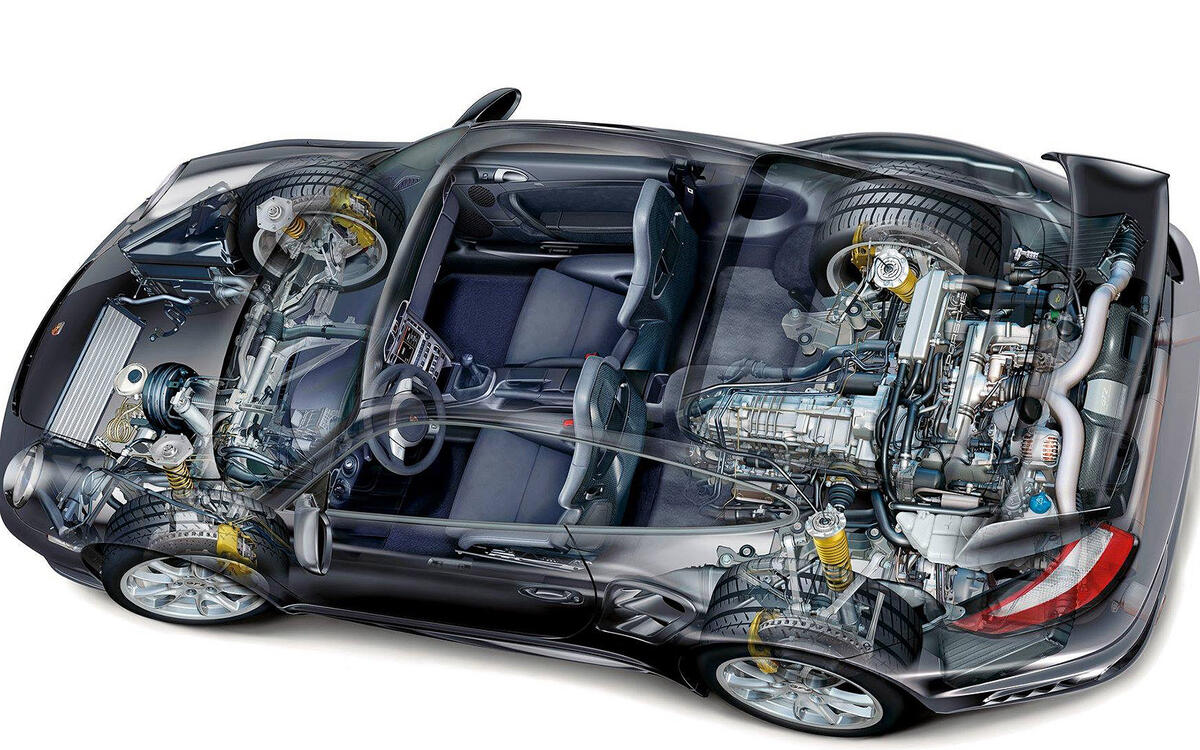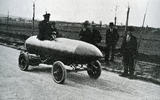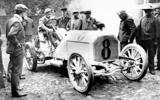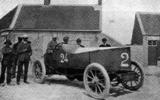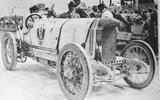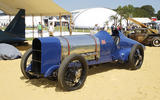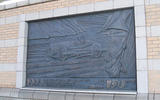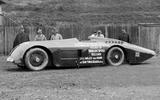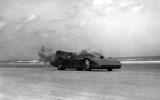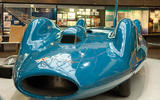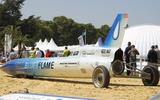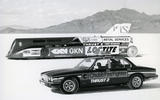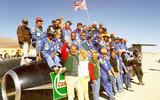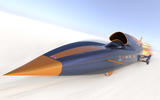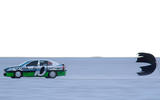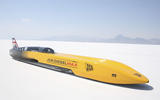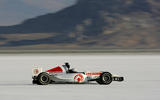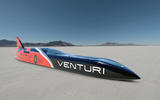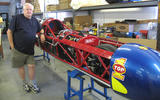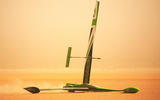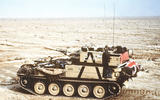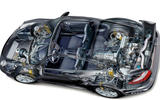 Slide of
Slide of
The Briton Zef Eisenberg became the fastest person to ever drive a car on sand, clocking up 210mph on a run at Pendine Sands in Wales.
In May 2018, Eisenberg broke the land-speed record for a motorbike on sand, reaching 201.5 mph at the same location. On Saturday May 18, the 46 year-old went one better.
To set the new record he drove a modified Porsche 911 at 210.332mph prepared by his MADMAX race team and ES Motors. Certain secondary records were set including fastest flying quarter (one way) wheel powered record at 206.492mph, fastest flying mile (one way) wheel powered record at 196.970mph, and fastest flying mile (2 way) at 187.962mph.
The car was a 2014 911 (991) Turbo S, but instead of the 550bhp of the standard car, this modified machine was capable of 1200bhp – and was still road-legal. To handle the extra power, the PDK gearbox was upgraded, and suspension lifted to allow more ground clearance above the changing surface levels. Other modifications included a full FIA roll cage, competition seats and safety harness.
The record supersedes the actor Idris Elba's 'flying mile' speed record (180.361mph) set at Pendine in 2015, set in a Bentley Continental GT Speed.
“The Porsche behaves very differently on sand than tarmac,” said an elated Eisenberg. “The sand creates a lot of resistance and tyre slip. In the end we could only use 850hp (1000hp at the engine) to avoid too much wheel spin."
Sir Malcolm Campbell first set the record at Pendine in 1927, hitting 174.8mph in the Blue Bird - a record that stood for nearly 90 years. Until the Second World War, all land-speed records were set on sand at places like Pendine and Daytona Beach in Florida. After the war however, it was realised that salt flats like those found extensively in Utah, Nevada, and parts of Australia were suitable for even greater speeds. So in a sense, this is a revival of a tradition. Let’s take a look at how the land speed record has changed over time:
 Slide of
Slide of
1898: Jeantaud Duc – 39mph
Rewind back to 1898 and it was in fact an electric car, the French-built Jeantaud Duc, which held the record for being the world’s fastest car.
Piloted by Chaselloup-Laubat, the first record holder crept its way up to 39.24mph and into the history books. Jeantaud carried on making cars until 1908.
 Slide of
Slide of
1899: La Jamais Contente – 62mph
The Duc didn’t hang on to his record for long; this French car, which means “Never Satisfied” in English, was also electric powered, and the first car to crack 100 km/h (62mph). It was driven by Belgian Camille Jenatzy.
 Slide of
Slide of
1904: DMG Mercedes Simplex – 97mph
Belgian Pierre de Caters took this Mercedes up to 97mph on a run at Ostende in Belgium in May 1904. The car wrung 90hp from an immense 11.9-litre four cylinder internal-combustion engine.
 Slide of
Slide of
1904: Gobron-Brillié – 104mph
Monsieur de Caters didn’t have long to rest on his laurels. In July of the same year the Frenchman Louise Rigolly broke his record, also at Ostende. and passed the 100mph (and 150 km/h) landmark in the process: achieving 103.56mph in his 15-litre Gobron-Brillié.he motor-vehicle was still in its primitive stages of development, but the age of speed had well and truly arrived.
 Slide of
Slide of
1913: Fiat S76 – 132mph
This car – universally known as ‘The Beast of Turin’ – shouldn’t officially be here. It was built specially by Fiat founder Giovanni Agnelli to break the land speed record. It featured a 28-litre 4-cylinder engine, capable of producing 300bhp.
Running at Ostende in December 1913, the American driver Arthur Duray managed a one-way speed of 132.27mph (213 km/h), but was unable to complete a return run within the hour allotted that the record-keepers demanded.
 Slide of
Slide of
1914: Blitzen Benz – 124mph
Great Britain got its first land speed record holder in June 1914 in the shape of Lydston Hornsted, at the wheel of this monstrous 21.5-litre Benz, which produced around 200bhp.
He drove at the Brooklands motor circuit, just outside London. The outbreak of World War I shortly afterwards put paid to such adventures for the ensuing few years.
 Slide of
Slide of
1922: Sunbeam 350hp – 136mph
After the war, would-be record breakers appreciated that the key to more speed was to take advantage of aircraft technology, where engines of immense power (for the time) were starting to appear. This led to the Sunbeam 350HP of 1920, which featured a 18.3-litre V12 plane engine.
Irish born brewery heir Kenelm Lee Guinness drove the car to a record 136.05mph in May 1922 at Brooklands; it would be the last time a land speed record was set at a circuit rather than a beach or salt flat
 Slide of
Slide of
1925: Sunbeam Bluebird – 151mph
Malcolm Campbell bought the 350HP and renamed it ‘Blue Bird.’ Land speed record cars began to demand longer, straighter roads in order to stretch their legs towards the next major landmark.
Pendine beach in Wales became a popular choice for the many British-based would-be record attempts, thanks to its long, flat landscape.
Campbell took his new acquisition to 146mph in September 1924, and the following July to 151mph. On 4 February 1927 Campbell set the land speed record at Pendine Sands, covering the Flying Kilometre (in an average of two runs) at 174.883mph, in the Napier-Campbell Blue Bird, also known as the Bluebird II. This car featured a 22.3-litre W12, with output of 502 hp.
 Slide of
Slide of
1927: Sunbeam 1000hp – 203mph
200mph was the next number to conquer for the world’s most daring drivers, but the beaches of Great Britain were too short even for an 890bhp car to reach it.
So Sunbeam’s not-so-accurately named 1000HP was shipped across to the US to Daytona, Florida where the beaches provided just enough space for it to reach a top speed of over 200mph. The 1000HP Sunbeam was powered by two aircraft V12s and hit 203.79mph in 1927, driven by Briton Henry Segrave.
Unsurprisingly, tragedy was never too far away. Just one year later Indy 500 winner Frank Lockhart’s 1928 record attempt resulted in him dying on the Daytona beach after a tyre blow-out led to a high speed flip, throwing him from his car before a record could be set.
 Slide of
Slide of
1935: Campbell-Railton Blue Bird – 301mph
Despite this, improvements to car performance came fast and in 1935 the 300mph limit was passed, with Sir Malcolm Campbell edging his way up to 301.13mph in his Railton Rolls-Royce Bluebird at Daytona Beach.
This car used a 36.7-litre supercharged Rolls-Royce R V12 engine, capable of belting out 2269bhp.
Conventional internal-combustion engines were reaching fantastic speeds for the time, but they were soon to be replaced by new technology. However war once more intruded itself into the quest for the land speed record.
 Slide of
Slide of
1964: Bluebird-Proteus CN7 – 403mph
July 1964 finally saw 400mph officially demolished with Sir Malcolm Campbell’s son, Donald, reaching 403.14mph in his gas turbine-engined Bluebird-Proteus CN7. He did the run at the very large Lake Eyre in South Australia, which for most of the time is a dry salt flat.
This run opened the door to fully jet-propelled record attempts.
 Slide of
Slide of
1970: Blue Flame – 622mph
American speed-freaks were understandably irritated by the long British dominance of land speed records, and Reaction Dynamics started development of this rocket-engined car in 1965. The car used a combination of high-test peroxide and liquefied natural gas (LNG), pressurized by helium gas.
Running at Bonneville Salt Flats in Utah and driven by Gary Gabelich, the car hit 622.407mph in October 1970.
 Slide of
Slide of
1983: Thrust 2 – 633mph
That record stood for 13 years. Then along came the British Thrust 2 – this car was powered by a single Rolls-Royce Avon jet engine from an English Electric Lightning jet fighter.
It was driven by Richard Noble, and run at the Black Rock Desert, Nevada, and in October 1983 hit 633.468mph.
 Slide of
Slide of
1997: Thrust SSC – 763mph
Richard Noble set out to beat his own record, leading the project to push the land speed record through a potentially very complicated obstacle: the sound barrier.
This time the car was equipped with not one but two jet engines - Rolls-Royce Spey turbofans, borrowed from the British version of the McDonnell Douglas F-4 Phantom II fighter.
These were enough to equip the car with around 50,000 pounds force - equivalent to around 110,000bhp. Perhaps appropriately enough, Royal Air Force pilot Andy Green was given the task of driving. The run took place on 15 October 1997, again at the Black Rock Desert, Nevada.
 Slide of
Slide of
1997: Thrust SSC – 763mph
“It’s the loudest, highest-pitched scream I’ve ever heard,” said British Royal Air Force fighter pilot Andy Green of approaching the sound barrier, who drove the Thrust SSC to set its world record.
“The car tended to pull—because of the way it was constructed with the staggered rear wheels—tended to pull hard left at around 600 miles per hour, and that was requiring up to ninety degrees of steering lock to keep it straight.”
 Slide of
Slide of
2020: Bloodhound SSC – 1000mph?
After the triumph of 1997, Noble and Green are back with a new target – to become the first car to break through the 1000mph mark. The car is powered by a Rolls-Royce Eurojet EJ200 afterburning turbofan, this time borrowed from a Eurofighter Typhoon fighter aircraft.
After a relatively modest 200mph run in Newquay in Western England in 2017, the effort ran into financial problems and nearly closed down. However, it was bailed out by businessman Ian Warhurst, who is now getting the project back on track.
The original aim was to crack 500mph in 2019 and then 1000mph in 2020, with runs to take place in South Africa's Northern Cape desert. We’ll have to see if these attempts remain on schedule.
Alongside the outright speed records, there have always been people and companies chasing slightly different speed records – here are some of the most interesting:
 Slide of
Slide of
Fastest 2.0-litre car: Skoda Octavia VRS
In August 2011, your writer witnessed the rather unlikely sight of a hot-rodded Skoda Octavia – a model and indeed a make not sold in America – thundering across a Utah salt flat, achieving 227.07mph.
This speed marked a new record for a 2.0-litre engine car; the supercharged engine produced 600bhp and was driven by British journalist Richard Meaden. The run was done to mark the 10th anniversary of Skoda’s VRS performance brand.
 Slide of
Slide of
Fastest Diesel car: JCB Dieselmax
British excavator giant JCB wished to advertise its prowess by breaking the speed record for a diesel car in 2006. The previous record was set by set by American Virgil Snyder, in the Thermo King streamliner in August 1973, with a speed of 236mph.
JCB purloined two engines from its primary product lines and heavily modified them to produce 750bhp each, helped along by two stage turbochargers, intercooler and aftercooler – each engine drove each axle. For mechanical reasons, the car had to be pushed by a JCB high-performance tractor to reach a speed of 30mph before the Dieselmax could engage first gear.
Driven by Andy Green - that man again – in August 2006 it achieved 329mph at the Bonneville Salt Flats in Utah. The next day it cracked 350mph. As diesel is no longer flavour of the month, we suspect it may retain the title for quite some time.
 Slide of
Slide of
Fastest hybrid car: Hyundai Ioniq Hybrid
Long a hybrid leader, Toyota received the Hybrid land speed record in 2004, hitting 130.7mph with minimal modifications to its Prius. However, in October 2016 Hyundai sent its then new Ioniq hatchback to the Bonneville Salt Flats, where it achieved 158mph.
Modifications from stock were limited; the car used the same engine and transmission, though certain heavy and power-consuming equipment such as the air conditioner were removed, as were unnecessary interior fittings.
 Slide of
Slide of
Fastest F1 car: Honda Formula 1
Contrary to popular belief perhaps, cars designed to run at the top rung of car racing are not the fastest in the world. Indeed, the fastest production car’s top speed – the 277.87mph of the Koenigsegg Agera RS – is considerably faster than the fastest Grand Prix cars of today.
That’s because outright top speed in racing is only of limited use because sooner or later, you have to turn a corner, and taking on a corner at well over 200mph is unwise. Still, this didn’t stop Honda heading to Bonneville in July 2006, armed with its previous season’s F1 car, the 3.0-litre V10-powered BAR-Honda 007.
The pilot was FIA Medical Car driver Alan van der Merwe – and he achieved 247mph (397km/h), but his aim of nailing 400km/h just eluded them. But he is certainly the world’s fastest ambulance driver.
 Slide of
Slide of
Fastest electric car: Venturi Buckeye Bullet 3 (VBB-3) – 342mph
The Buckeye Bullets are a series of experimental cars created in a joint venture by engineering students of Ohio State University and Franco-American electric car specialist Venturi. In 2009 its Bullet 2 – powered by a hydrogen fuel cell – achieved 303mph.
They then re-equipped the car with electric batteries and, now named Bullet 3, set a new world record in September 2016 for electric cars with a speed of 342mph, driven by Roger Schroer.
 Slide of
Slide of
Fastest motorcycle: Ack Attack – 394mph
Ack Attack was produced by Ack Technologies, an avionics company, Led by Mike Akatiff (pictured), based in California. The Ack Attack two-wheeler is powered by two 1.3-litre Suzuki Hayabusa engines, boosted by a Garrett turbocharger, intercooled with dry ice, and good for over 900 horsepower.
In September 2010 daredevil Rocky Robinson steered the machine to its scarily high speed at the Bonneville Speedway in Utah. Ack now intends to break the 400mph mark.
 Slide of
Slide of
Fastest steam-powered car: Inspiration – 148mph
The Inspiration was the brainchild of the Briton Glynne Bowsher, an engineer who worked on the original Thrust 2 and Thrust SSC projects. The Inspiration features a two-stage turbine driven by superheated steam from 12 boilers containing distilled water.
The boilers are heated by burners which burn Liquid Petroleum Gas to produce 3 Megawatts (10.2 million BTU/hr) of heat. The steam produced is at a temperature of 400 °C (752 F) and a pressure of 4000 kN/m2 (40 bar - 580psi) – producing around 360hp. It consumes around 40 litres (10.6 US gallons) of water per minute.
In August 2009 British-born US resident Charles Burnett III drove the car to a steam record – which had stood for 103 years - of 148mph at Edwards Air Force Base in California. Burnett sadly died in a helicopter accident in January 2018, aged 61.
 Slide of
Slide of
Fastest wind-powered car: Ecotricity Greenbird - 126mph
Brainchild of Richard Jenkins, the Greenbird is technically a land yacht, made primarily of carbon composite plastics, weighing around 600kg (1320lb).
The vehicle draws on boat technology; the fastest sailing boats such as the giant catamarans that compete in the America’s Cup have the seemingly impossible ability to go much faster than the speed of the wind that powers them.
In March 2009 Jenkins took the Greenbird to a speed of 126mph at Ivanpah Lake in the Mojave Desert, California.
 Slide of
Slide of
Fastest solar-powered car: Sky Ace Tiga – 57mph
A project from Japan’s Ashiya University, this solar-powered tricycle achieved 57mph in a run at Shimojishima Airport, Okinawa, in August 2014. It was driven by former rally driver Kenjiro Shinozuka.
 Slide of
Slide of
Fastest tracked-vehicle: FV101 Scorpion – 51mph
Powered by a Cummins BTA 5.9-litre diesel producing 187bhp, the Scorpion weighs 8091kg (17,800lb). 3000 were produced by British company Alvis between 1972 and 1985, half of which were exported. Retired from active service for the British Army in 1994, some were retained for training use.
An example set the world-record for the world’s fastest tank in January 2002, attaining a speed of 51.1mph at the QinetiQ test track in Surrey in southern England. Alone of the vehicles in this feature, this machine is a stock edition.
 Slide of
Slide of
Fastest car on sand: Porsche 911 Turbo S – 210.332mph
The Briton Zef Eisenberg became the fastest person to ever drive a car on sand, clocking up 210.332mph in a modified Porsche 911 (991) Turbo S on 18 May 2019.
The car was a 2014 911 Turbo S, but instead of the 550bhp of the standard car, this modified machine was capable of 1200bhp – and was still road-legal.
British racing team Madmax broke a new British sand speed record on Saturday, achieving over 210mph in a modified Porsche 911 Turbo S
Advertisement


